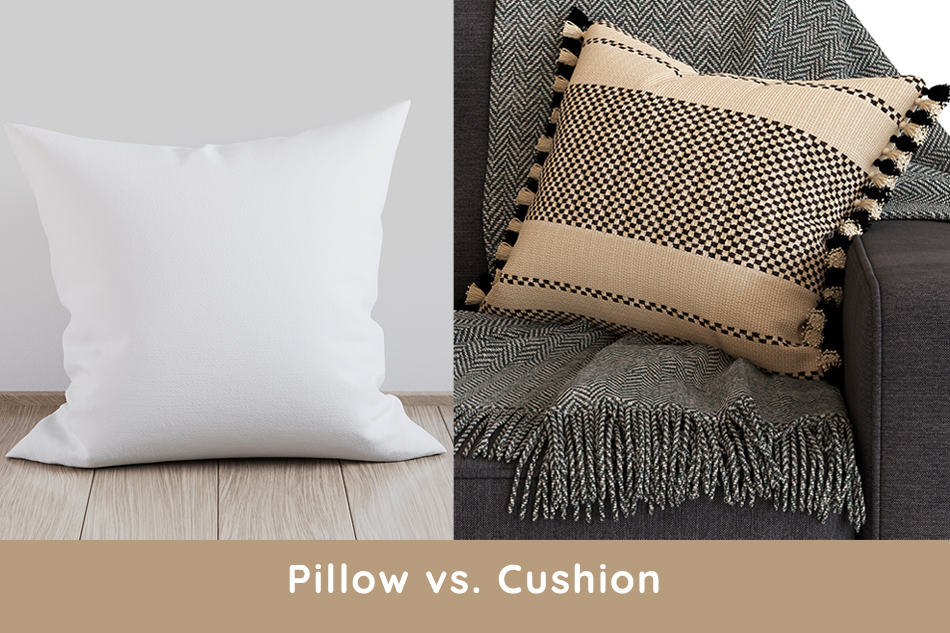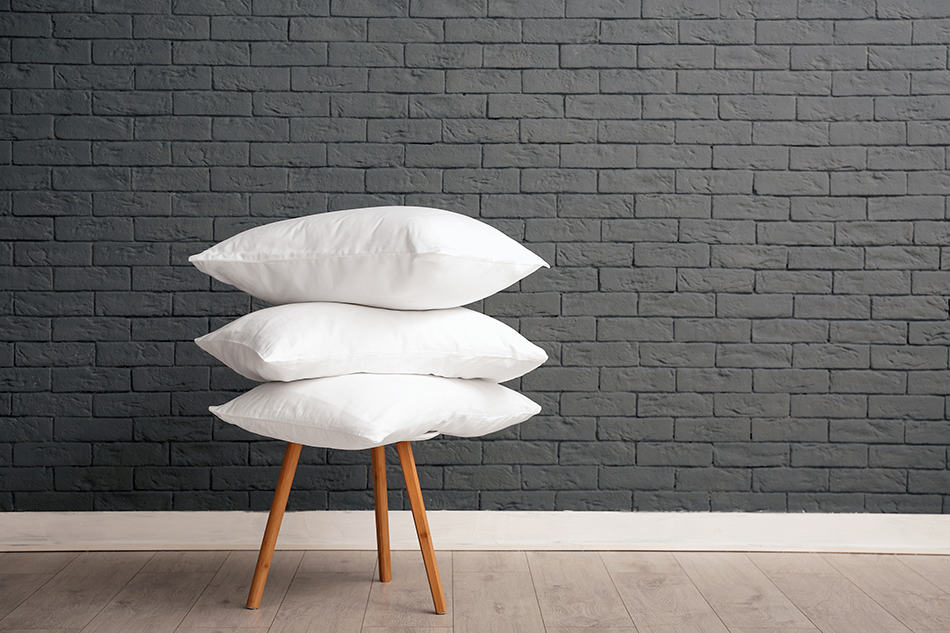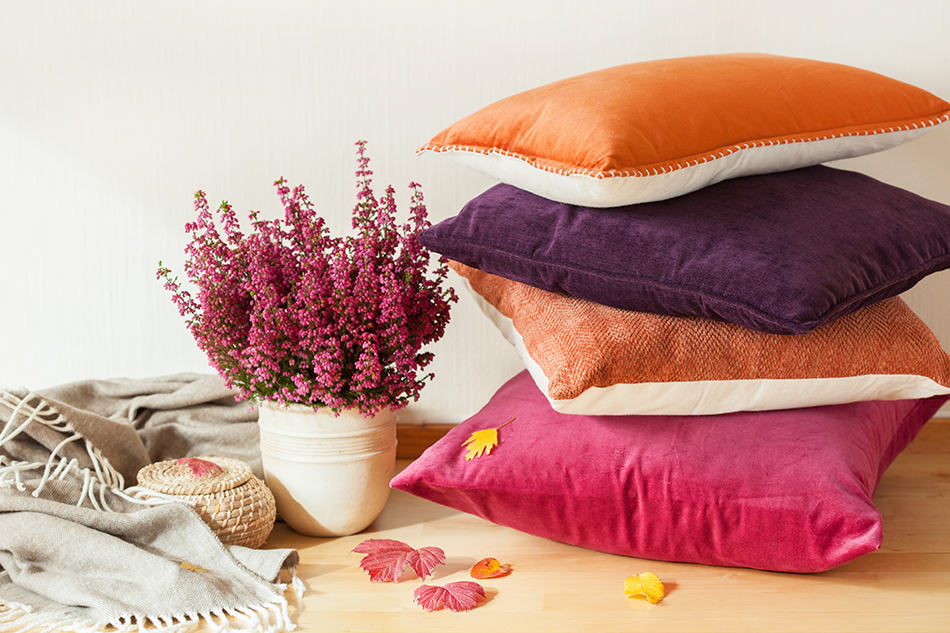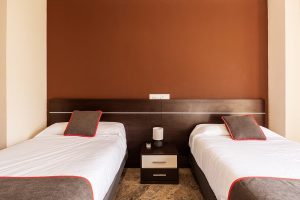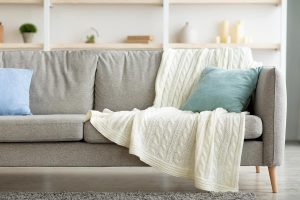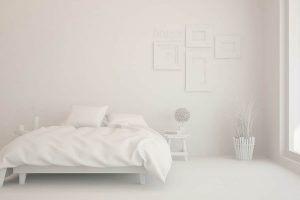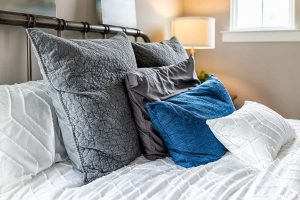Any comfortable room needs to have a soft, cushy place in which to sit on – or, if you are in the middle of a Netflix marathon or a Thousand and One Nights re-enactment – in which to lie, stand, and play around on.
Plus, a good set of throw pillows and patterned cushions are also a great opportunity to mix and match some colors. In order to choose pillows or cushions and how many to get, you will need to know their differences, and take into account both function and form.
Differences between Pillows and Cushions
Most of us don’t pay that much attention to the term we use when buying cushy accessories. However, pillows and cushions are not exactly the same. This is something that it’s best to know before hitting the order button.
A pillow is a loose cloth bag filled with down or foam, used to support the head or neck. A cushion is a slightly firmer sack meant to provide support for sitting, kneeling, or lounging.
Each object also has different types, and they tend to be made of slightly different materials.
Types of Pillows
As pillows are mainly made for head and neck support, the materials used to fill them are often designed with ergonomics in mind. This means that they come in a wider variety of constructions and shapes.
On the aesthetic side, pillows tend to be a bit plainer: most of them are plain white. As you will be spending a lot of time sleeping (and sweating) on top of them, pillows will require a washable casing. These are meant to be easy to wash rather than to look pretty.
Some of the most common pillow options available include:
- Feather pillows. These are durable pillows meant to let you “sink” your head when you go to sleep. However, cheaper feather pillows may hide a few pokey quills inside.
- Dow pillows. The fancy cousin to feather pillows, dow is the softer material found in the underbelly of geese. They are also meant to provide the same comforting sinking sensation but are a bit more homogeneous.
- Memory foam pillows. These pillows are often designed for people with back pain or posture problems. Memory foam is a firmer alternative that can contour around your neck or head. This is meant to provide better support, but they often have a chemical smell.
- Latex pillows. Latex offers a firmer, more lasting material than memory foam. Many latex pillows come with very specific shapes, meant to relieve specific parts of your neck or upper back. Latex is also better at keeping mold and dust mites away.
- Gel layered pillows. Ergonomic pillows with an outer layer casing are often used in hot climates or by people with hot flashes. The gel is meant to provide a cool sensation directly below your scalp.
- Microbead pillows. These pillows are made from tiny polystyrene beads. These are meant to contour around your head and neck but have a firmer texture than memory foam. Often, the squishy sensation can be hard to get used to. However, they offer great relief for neck cramps.
- Water pillows. This unusual choice is an eco-friendly and adjustable alternative to latex or microbeads, as it won’t take 500 years to biodegrade. However, water pillows can offer as much firmness or softness as you need. They also require no fluffing.
In addition to materials, pillows also vary depending on size and shape. Standard, queen-sized, and king-sized pillows all follow the same rectangular shape and only vary in their total diameter. Queen and king-sized pillows are naturally larger, as they are meant to cover a larger bed.
European pillows, on the other hand, are large square pillows. They are meant to be decorative and fall midway between a pillow and a cushion. Finally, travel pillows are small rectangular or tube-shaped pillows commonly seen in airports. They are supposed to fit neatly around your neck and offer some support on tight airplane seats. However, they are slowly becoming popular as a décor accent. Because of this, they are easy to find in bright color casings and are usually made from washable materials.
Types of Cushions
Cushions are not meant to support your head or neck, so they tend to provide fewer ergonomic options. On the other hand, they are often meant to be decorative, so they offer a wider variety of textures, patterns, and casings. As they tend to be placed in the “public” parts of the house, such as living rooms, they also need to be sturdier.
Because of this, you’ll be hard-pressed to find latex or gel cushions around. Your filling options will be limited to feather, down, cotton, or synthetic fibers. When it comes to cushions, the spotlight must go to the shape and casing materials:
- Chair cushions. These often go directly on top of a chair and are meant to make it more tolerable to sit for long periods. As they often go directly beneath denim or rough fabrics, they tend to be made with thicker cotton and synthetic blends or faux leather.
- Bench cushions. These are wider yet less deep cushions that are often placed on outdoor patios. They are commonly made from waterproof or scratch-resistant materials and filled with synthetic fibers.
- Window seat cushions. These indoor cushions come in a large variety of shapes and sizes but are often rectangular. They are meant to be decorative pieces. They go very well with cottage-inspired or vintage styles, so their casings tend to be made from more delicate fabrics than their outdoor counterparts.
- Floor cushions. These trendy and bohemian cushions are often very large, very deep, and made from washable materials. They are often considered indispensable for rooms following Middle-Eastern-inspired styles.
- Throw pillows. Despite their name, throw pillows are really cushions. These small rectangular cushions meant are often placed on top of a larger sofa or chaise-lounge. They are eminently decorative, so they often have contrasting colors or unusual designs.
Pillows and cushions are both meant to add comfort and warmth (both psychological and physical) to a room. However, they are not interchangeable. Pillows live in the bedroom, and their main job is to ensure you sleep comfortably. On the other hand, cushions are often used around the house. Make sure you use each one where you should!
